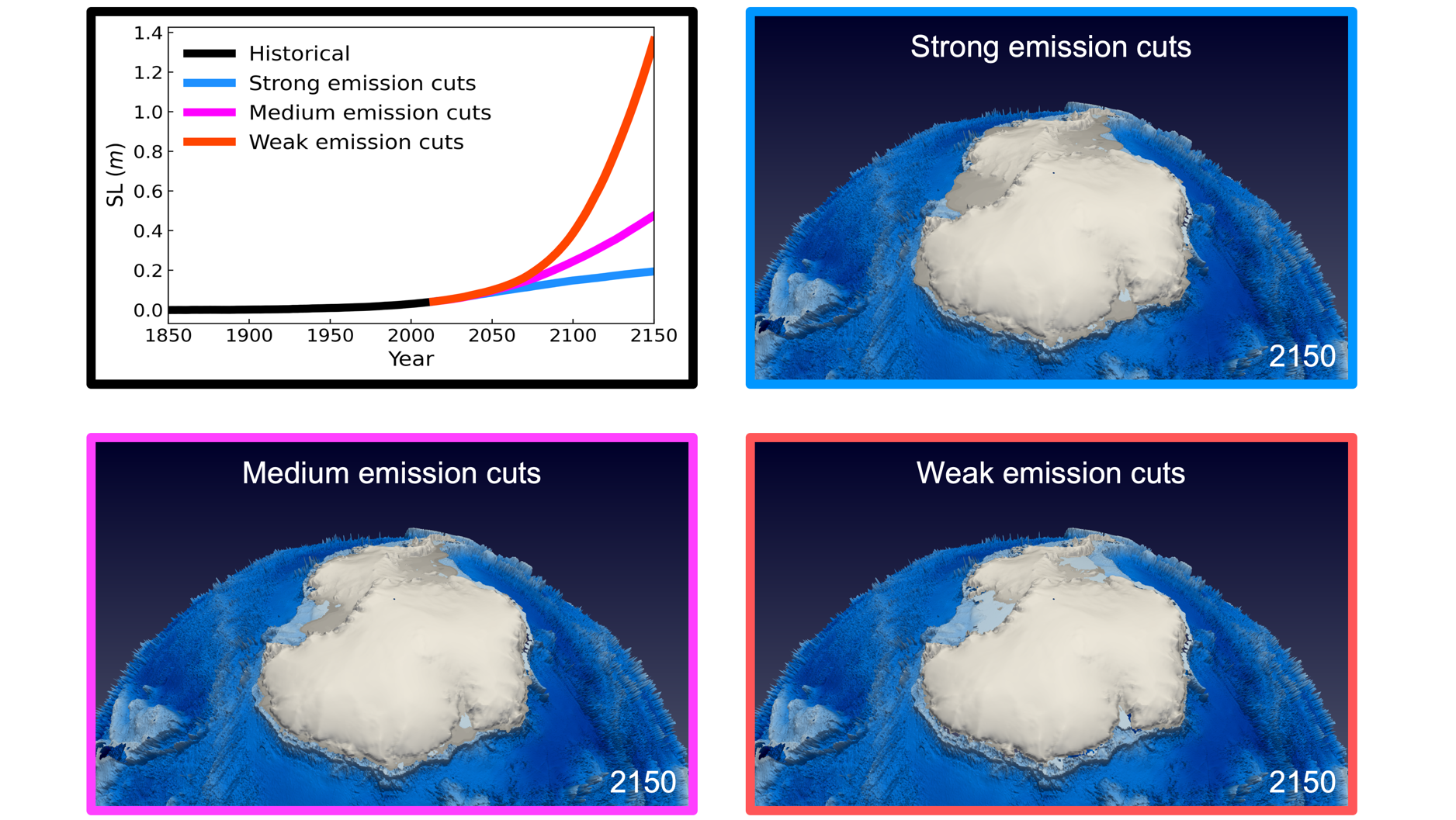Media release
From:
Climate change: More accurate future global sea level rise projections *IMAGE*
The Antarctic and Greenland ice sheets are projected to contribute about 1.4 m to global sea levels by 2150, under a future high-emission scenario, according to new climate modelling simulations reported in Nature Communications. Irreversible Antarctic ice sheet loss and rapidly accelerating sea level rise are projected if rising global temperatures increase by more than 1.8°C above pre-industrial levels. The findings may provide a more accurate estimation of global sea level rise, compared to previous climate models.
Global mean sea level has risen by about 20 cm in the past century and this trend is likely to accelerate with increasing human contributions to global warming. As a large proportion of the world’s population lives near coastlines, providing accurate projections of global and regional future sea level trends is crucial. Currently, the response of the Antarctic ice sheet to global warming provides the largest uncertainty in estimating future sea levels. Recent studies estimate that sea levels could rise by about 1.4 m by 2150, under a high-emissions scenario. These estimates include contributions from the thermal expansion of seawater, ice sheets and glaciers. However, most global sea level projections currently ignore the active role of ice sheet-climate interactions in their modelling.
Jun-Young Park and colleagues present a new climate model, which accounts for the complex interactions between ice sheets, icebergs, the oceans, and the atmosphere. The model allowed them to study the potential future evolution of the Antarctic and Greenland ice sheets to better estimate their contributions to sea level rise. Under a future high-emission scenario, the two ice sheets alone are expected to each contribute about 60–70 cm to the global mean sea level rise over the next 130 years. Additionally, the authors found that limiting global warming to 2°C above pre-industrial levels would be insufficient to slow down the rate of global sea level rise and prevent an irreversible loss of large areas of the West Antarctic ice sheet. Only by limiting global temperature increase below 1.8°C relative to pre-industrial levels by the end of this century, can sea level rise acceleration be avoided, the authors report.



 International
International



